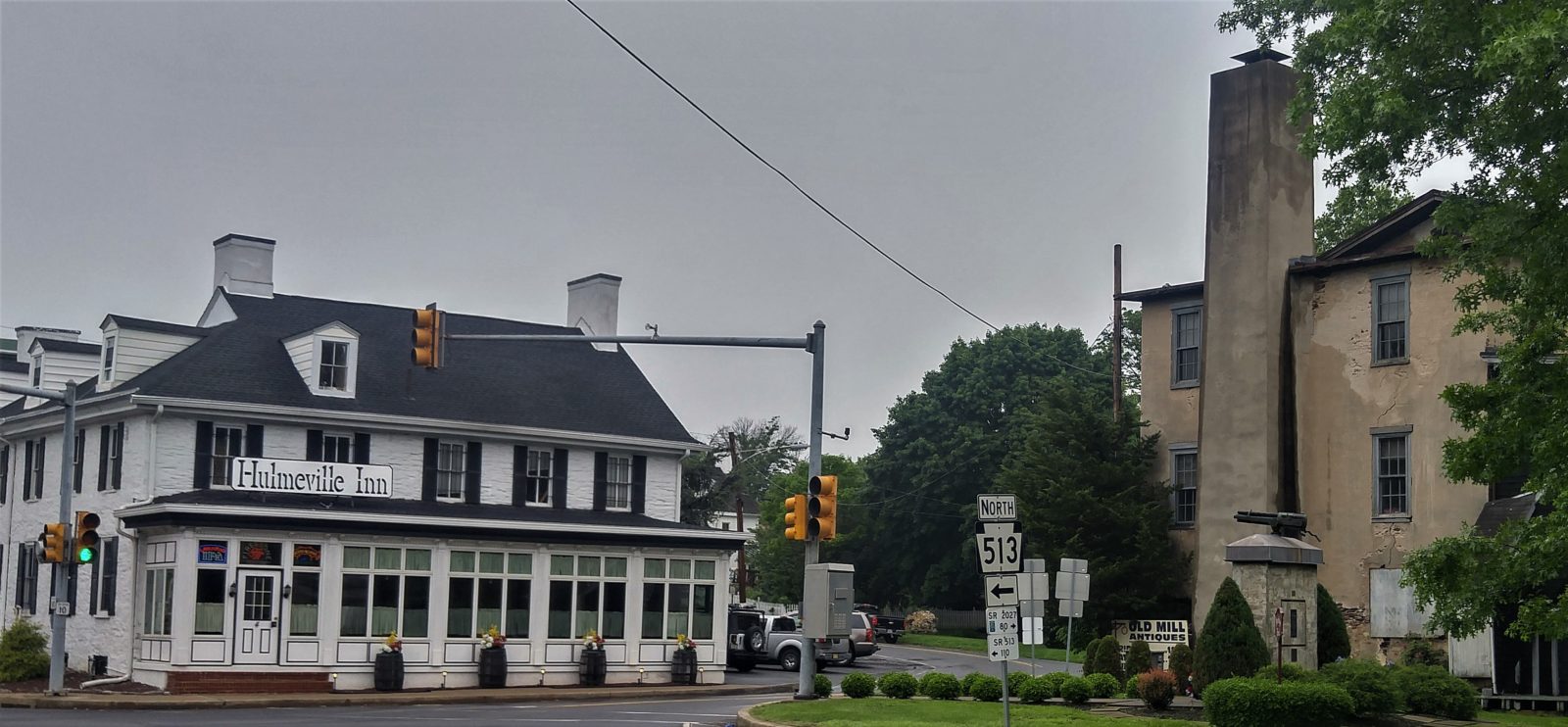One man’s vision after the Revolutionary War created a family town on Neshaminy Creek.
Late in life my father told us kids, “Now I know the value of family being close by.” He and Mom lived proud, independent lives midway between my sisters’ homes in Florida and mine in Bucks County. For us, a 10-hour drive or connector plane flights were necessary to visit. We made trips as often as we could but in the end it wasn’t as often as we would have liked due to distance and obligations. Sad.

Which leads me to the story of John Hulme Jr. He found the means to keep his family together by building his own town a few years after George won the American Revolution. Hulme was an industrious Quaker born in Buckingham who cobbled together enough cash in 1796 to buy a place called Milford Mills. It was a vital wagon crossing of Neshaminy Creek (really a river) between vast farmlands in Bensalem and Middletown. A 70-year-old grist mill and house defined Milford as well as the intersection of two roads, one connecting Trenton to Philadelphia and the other Bristol to Newtown.
Hulme, 46, got to work building 30 dwellings around the mill. Soon came stores, workshops plus new and expanded mills. Taking up residence in 1801 was young sign painter Edward Hicks who would become famous for his “Peaceable Kingdom” oil paintings. By 1813, “Hulmeville Landing” had a post office and a hotel. The founder was elected to the state Legislature and presided over the county’s first financial institution, Farmers Bank in town. Hulme persuaded his five sons to become tradesmen. As he explained to a Boston visitor, “I might have educated one of my sons as a lawyer, or set one up as a merchant, but I had not property enough to give them all such advantages. I wished to make them equally attached to each other, and useful members of society. One of them is a miller, another a storekeeper, a blacksmith, a tanner, a farmer, a coach maker, all masters of their respective employments and they all assist one another. I have been rewarded by their good conduct and grateful affection. No one envies another. I have never heard an expression of discontent. We live like one family and my children and grandchildren are the comforts of my old age.”
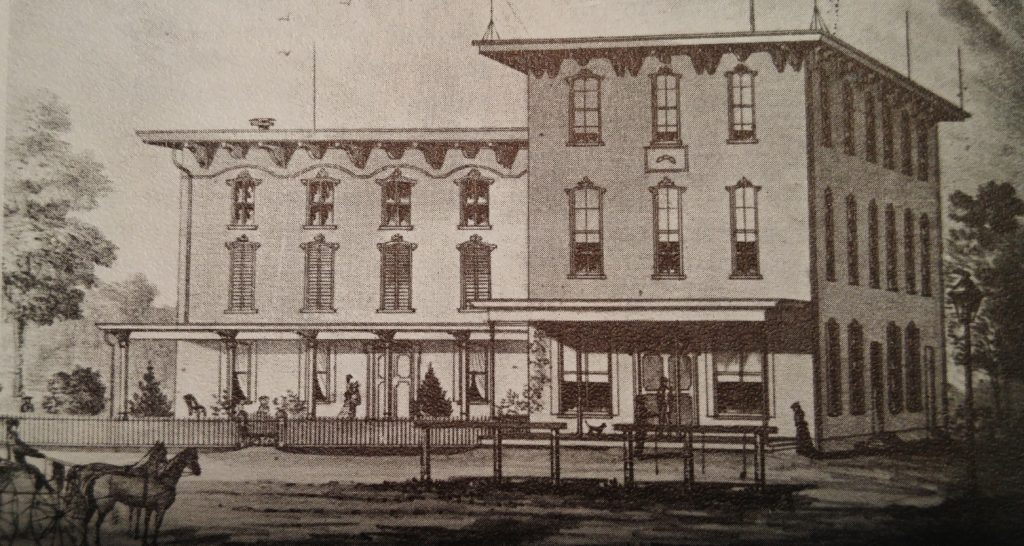
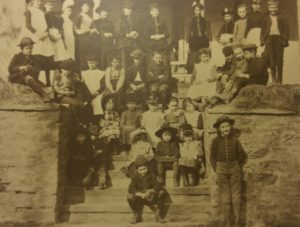
John Hulme Jr. passed away in 1817 at age 71. About 20 years later, 7-year-old Martha Crealey and Mary Parsons symbolized the town’s spirit. As cross-street neighbors, the girls were inseparable, often playing catch with acorns around their homes. “Both died before they reached 10 years, leaving monuments to their memory without knowing it,” noted a town historian in 1905. “In each yard a little oak sprang up and in the years that have intervened, developed into splendid specimens of trees. The trees are seventy feet apart, and the lower limbs intertwine, forming an arch over Neshaminy street, the Doylestown and Bristol trolley running under it. What more beautiful and suggestive memorial. The trees are named Martha and Mary, respectively.”
Hulmeville incorporated in 1872 as a square-mile borough. Hosiery, cotton and woolen mills and many shops brought continued prosperity. Two churches – an Episcopal founded in 1831 and a Methodist in 1840 – flourished as did a large public school and a private school. So did 3-story Johnson Hall capable of seating 350 people where magician Harry Houdini is said to have performed. The town also added a flood-resistant stone bridge over the Neshaminy and Dewey Park for pleasure boating and picnics behind a spillway dam on the river.
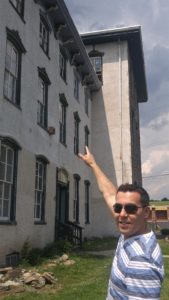
Unfortunately a slow, steady industrial decline drained Hulmeville of its life blood in the 20th Century. Today traffic rushes through in the blink of the borough’s singular traffic light. Shuttered Fricke’s Mill and Johnson Hall stare down on homes touting a bygone era. Hulmeville dreams of better days forecast in the restoration of the hall. Young investors Alex Covrljan of Yardley and Dimitry Gitarts of Langhorne plan to open a coffee house and professional offices in the landmark building this summer. “Hulmeville is well poised to succeed,” said Alex. “There’s really nothing like it down here. You have to go deep into Bucks to find a similar setting. Hulmeville is a beautiful location with great opportunity.” His partner Dimitry is just as enthusiastic. “We’re excited,” he said on a tour of Johnson Hall during its total renovation.
Hulmeville Historical Society members Mary Johnson, June Robinson, Don Haefner and Rev. Lorelei Bach, society chaplain, are hopeful. Mary, group vice president, said recognition is long overdue in a town where former space shuttle astronaut John David Bartoe grew up. In a sense, the borough reaches for the stars.“We are so overlooked,” Mary told me. “We’re trying to preserve the spirit of the town. We’ve been able to do it so far.”
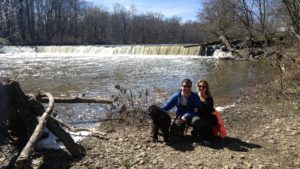
Sources include “The History of Bucks County, Pennsylvania” by W.W.H. Davis published in 1905, “Memoir of the Life of Eliza S.M. Quincy” by Susan Morton Quincy published in 1861; and “Hulmeville Borough Centennial 1872 to 1972″ compiled by Howard Martin of the Hulmeville Historical Society.

